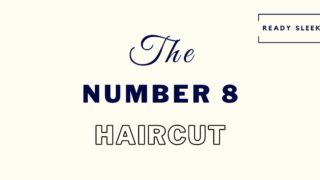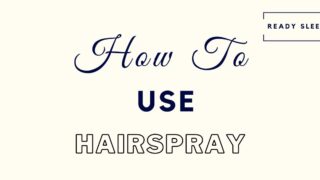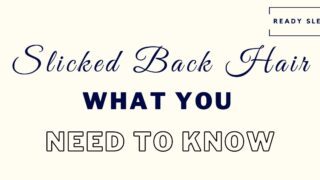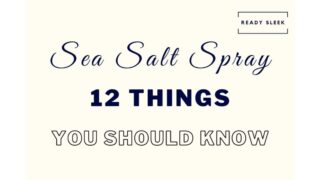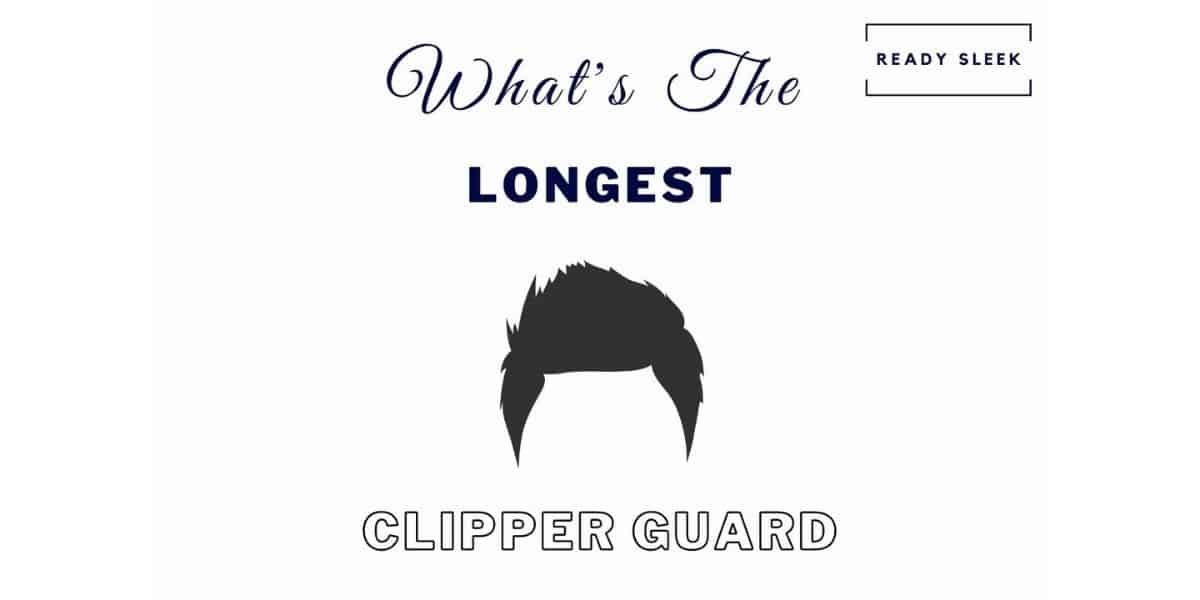The moment your barber asks you what cut you want can be stressful. With so many styles out there the terminology can be confusing. So, what’s the difference between a low fade and mid-fade?
With low fades, the gradual tapering of length starts approximately half an inch above the ear. In contrast, with mid fades, this gradual tapering of length occurs higher than this but not quite as high as the temple. As a result, low fades look more subtle than mid fades.
So, it’s about the transition point.
The point where the “fade” on the back and sides is most prominent and obvious.
The difference between the two can be very subtle indeed. Sometimes, it’s pretty debatable as to whether a style should be called a “low fade” or a “mid-fade”.
They can look very similar if the difference is particularly small.
We’re about to dig a little deeper into the ways in which they’re different. Following this, you’re going to see some solid examples of each of these styles done right.
All of this should help you decide which one may be for you.
Let’s get to it.
Low Fade Vs Mid Fade: The Key Differences
Here are those differences explained in more detail.
1. The Transition Point
Although I’ve already mentioned it briefly, it’s worth discussing in a little more detail to really hone in on it.
A “fade” is the gradual increase in length or “tapering” of the hair as you go up the sides and back.
Sometimes, the sides are faded while the back is left alone. A “burst” fade is an example of one of these styles.
A “low” fade is, as the name would suggest, a fade where this tapering or transition from short to long occurs lower down.
Although there isn’t an exact science to it, to be more precise you could say that it’s usually approximately half an inch above the ear.
A “mid” fade is a fade where the tapering starts a little higher than this. Again, there isn’t a hard-and-fast rule.
But it’s safe to say that this transition point should lie somewhere between that of a low fade (around half an inch above the ear) and the temple (where a high fade would occur).
Both of these fades could be mild, where the difference in length between the shortest and longest hair on the back and sides is pretty small.
Or they could be pretty pronounced, with the shortest part being shaved down to the skin. This is what’s known as a “skin fade”.
But the height at which low fades and mid-fades lie on the skull is really the only technical difference between them.
2. Subtlety
Here’s a difference that is less technical and more personal/subjective.
Low fades are a little more subtle than mid-fades.
This might seem obvious, but it may make all the difference when it comes to your selection between the two.
With low fades being further down, they aren’t as noticeable as a mid-fade or a high fade would be.
You’d still have the benefits of a fade – it’ll make the face look slimmer and define the jawline.
But it just won’t be as obvious as a mid-fade, particularly when viewing it from front-on.
Mid-fades are more prominent and in-your-face. They’re more likely to be considered the prominent feature of a hairstyle, as opposed to just being a supplement.
If you’re a fan of subtlety, or you don’t want the fade to draw too much attention, a low fade may be more suitable for you.
Should You Get A Low Fade Or A Mid Fade?
When deciding between a low fade and a mid fade, take the face shape into consideration. As more of the sides are clipped shorter with mid fades, it can have a slimming effect that is often more beneficial to men with rounder faces than a low fade would be.
When it comes to other face shapes, however, both low fades and mid fades can work well.
The other key factor to consider when making your decision is how subtle you want your fade to be.
There are two main things that can make a fade look more or less subtle. They are – how high up the transition occurs (i.e the transition point), as well as how short the shortest length of the fade is.
When the shortest length is literally shaved – i.e a skin fade – the contrast with the hair higher up is more obvious and the fade is going to be more attention-grabbing than a number 1 fade or a number 2 fade, for instance.
So, regardless of whether you’re going for a mid fade or a low fade, if you want to make it more eye-catching – go for a shorter length.
But as I explained in the section above, the higher up the transition point of the fade, the more obvious and attention-grabbing it’ll be as well.
Mid fades will always be more obvious than a low fade. If you want something more in-your-face, go for a mid fade. If you value subtlety when it comes to hairstyles, a low fade may be a better option.
5 Great Low Fade Styles
As you’ll soon see, low fades can be trimmed into almost any style you could possibly think of.
Use this as a source of inspiration. If they aren’t doing it for you, maybe the mid-fades will.
1. Messy Quiff With Low Fade
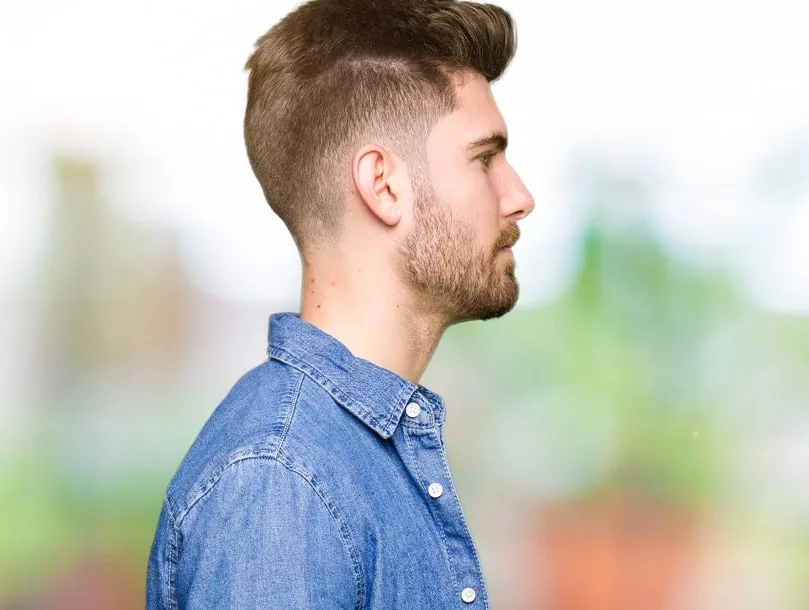
A quiff is a style where the forelock (hair above the forehead) is swept upward, while the hair behind it remains pretty flat.
They’re one of the most popular styles around and can take many, many different forms.
They can be messy, neat, tall, short, long, tousled, spiky, etc.
This one here’s a messy quiff with a fantastic laid-back aesthetic. The tousled, separated appearance to the forelock has most likely been styled using the fingers.
The low fade here is well-defined and extends to the back. The difference in length is quite large but it isn’t quite a skin fade.
As you can see, it’s subtle but still draws the eye.
2. Modern Pompadour With Low Skin Fade
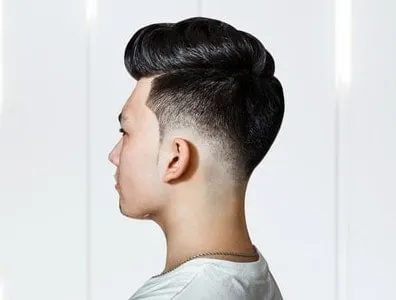
Pompadours are similar to quiffs in that the hair is swept upward and backward away from the face.
However, it’s swept all of the way back and not just the forelock. It usually has a pristine and glossy look to it, although not always.
The focus is often on achieving volume and fullness. It’s more attention-grabbing and obvious than a quiff.
The low fade here is a skin fade and very neatly done. As you can see, the length gradually tapers as you move down the sides and back.
When you’ve got a style with long hair on top, the great thing about faded sides is that it draws even more attention to it.
The lack of hair on the sides adds prominence to the hair on top, whether it’s styled into a french crop, a pompadour, a quiff, or anything else.
3. Side Slicked Quiff And Low Skin Fade
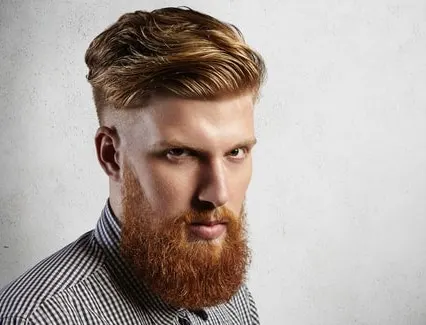
Here’s a great side-slicked quiff where there’s a heavy tilt to the right. The wavy and layered appearance has most likely been achieved using a comb.
The low fade once again makes the top look even fuller and more voluminous.
It’s also a great example of just how great a full beard can look with a low fade.
The beard has been tapered into the sides, blending in seamlessly. It looks natural and very effective.
This is a good option if you find that the fade makes the face look a little narrow. Growing a beard with a rounded lower border should help you compensate for this.
4. Crew Cut With Low Fade
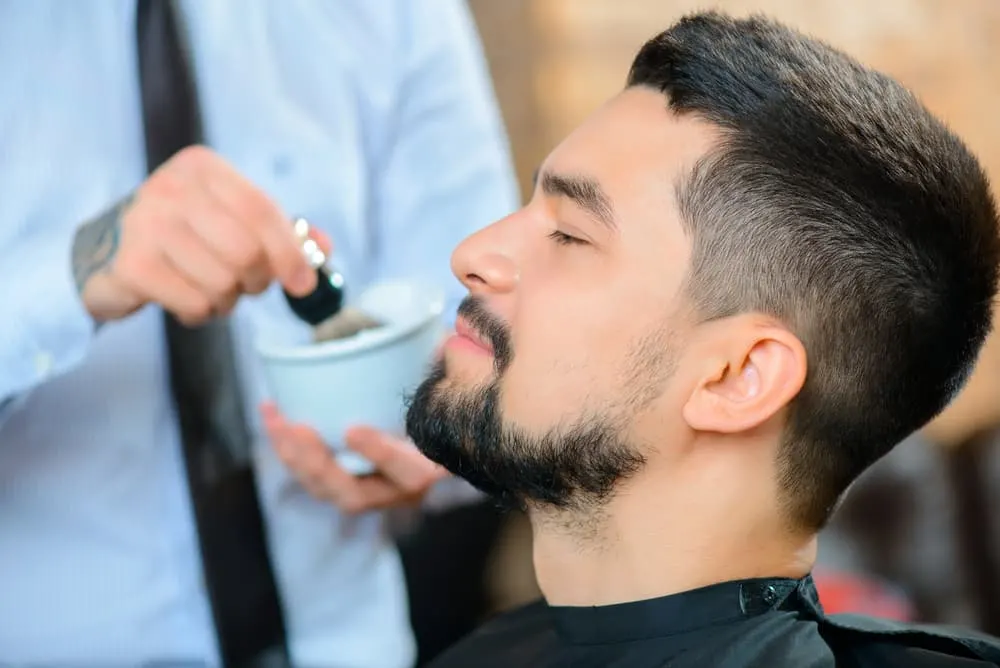
A crew cut is another style where the hair on top is long while the sides are kept short.
With crew cuts, there’s a slight quiff before the hair graduates in length as you go back toward the crown.
From a side profile, the hair on top looks pretty horizontal as a result.
As I said, a fade can be trimmed into any style you can think of.
Here, the low fade isn’t quite a skin fade but is still immediately noticeable.
The heavy stubble also tapers upward into it pretty seamlessly.
5. Faux Hawk With Low Fade
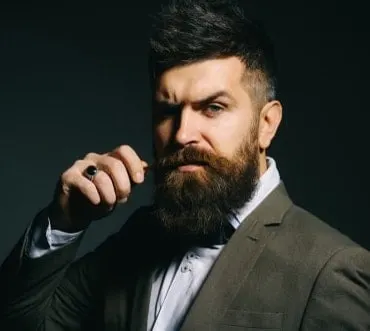
OK, this one is a toss-up between a low fade and a mid-fade.
As I mentioned earlier, the difference isn’t that big and it can be hard to tell the difference sometimes.
At the end of the day, it doesn’t matter a huge amount. This fade seems pretty subtle and calling it a low fade seems more appropriate.
The faux hawk is another style with long hair on top and short back/sides.
The hair on top is spiky and eventually forms into a point.
Adding a fade like this will add prominence to the pointedness of the faux hawk.
It’s a great option for men with rounder or “shorter” face shapes. This is because the fade can make the face look narrower and the pointedness of the faux hawk will add contrast and balance.
5 Great Mid Fade Styles
Let’s compare. If you weren’t a fan of the low fades, the mid-fades may well be what you prefer.
1. Buzz Cut With Mid Skin Fade
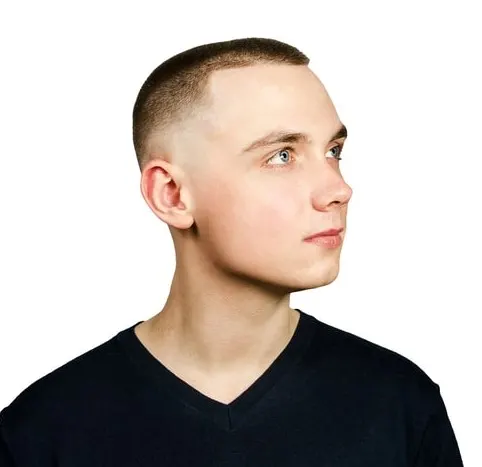
Buzz cuts are great, aren’t they?
They’re simple, sophisticated, and ooze that clean-cut military aesthetic.
Buzz cuts can, however, sometimes come across as a little bland when they aren’t spiced up. Adding a fade is a simple way to do this.
Once again, the higher the fade, the more pronounced and eye-catching they usually are.
A mid-fade such as this is a great way to make the buzz cut stand out a little.
The very short top and faded sides can really make the face look slimmer and add definition to the jawline.
The glasses here are a nice touch.
A buzz cut can sometimes make a face look rounder than you might like.
Because of this, choosing a pair of glasses with sharp, angular frames is often a nice way to add some contrast and balance.
2. Comb Over With Mid Fade
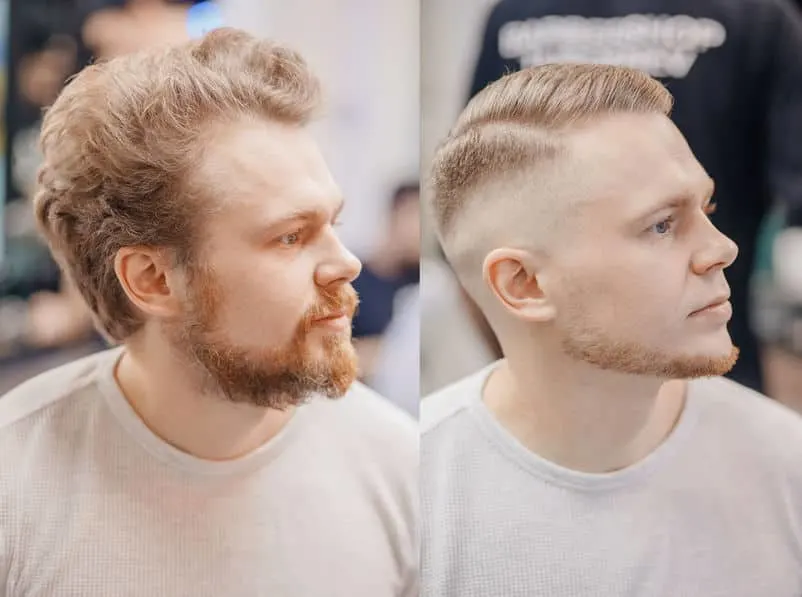
A “comb-over” is any style where the hair on top remains relatively flat and is simply slicked to one side or the other.
It doesn’t necessarily have anything to do with thinning hair or receding hairlines.
This is an example of a very effective comb-over style.
On its own, it’s a pretty safe, middle-of-the-road hairstyle to adopt if you just want a neat and sharp hairstyle to rock.
But enter the mid-fade.
It’s a simple way to add a modern and exciting edge to a relatively traditional and conventional hairstyle.
The picture also shows you how effective a neatly-sculpted chinstrap beard can be when coupled with a mid-fade.
It’s a great way to contour and add definition to the lower jawline.
3. Pompadour With Mid Drop Fade
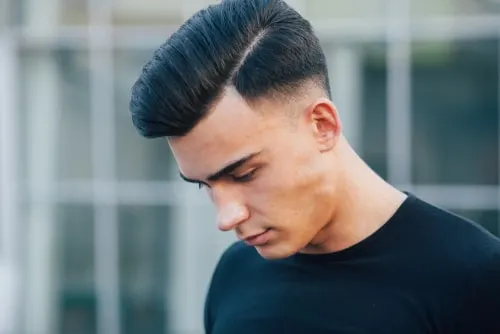
Here’s another pompadour for you.
But as you can see, the fade lies a little higher than the one I showed you earlier on.
Because of this, the pompadour on top is given even more prominence and looks taller and fuller than it otherwise would.
The layered texture of the pompadour has most likely been achieved using a round brush or comb together with a blow dryer.
4. Textured Quiff With Mid Fade
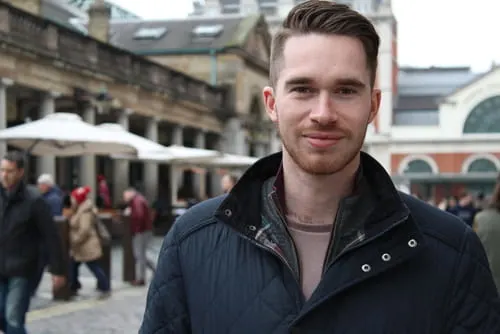
This broken-up and tousled texture is great. It’s natural and laid-back, yet surprisingly difficult to achieve.
The gloriously messy quiff style has most likely been achieved by using the fingers.
Never underestimate the power of getting in that hair and working it using your bare hands and a little styling product.
A matte finish such as this is best achieved with a little bit of matte clay.
The mid fade is very neat indeed. This is a great way to contrast the messier texture on top.
Once again, the very short sides make the quiff style look even fuller.
5. Man Bun Undercut With Mid Fade
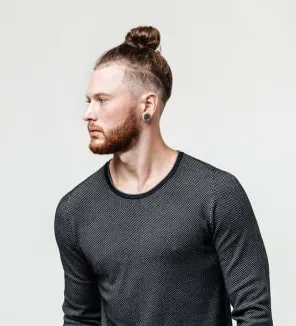
An undercut is any style where there’s a sharp transition between the top, back, and sides.
The sides and back are typically much shorter than the top.
The longer hair on top can be styled in many, many different ways. This could be a quiff, comb over, a pompadour, or even a man bun.
Here’s an example of a great man bun undercut.
But even undercuts can have faded sides. As you can see, halfway down the sides there’s a gentler transition from long to short.
It’s a great option when you want the attention-grabbing sharp shift in length of an undercut, with the subtlety of a gradual taper as you go down.
Conclusion
As you can see, the difference between a low fade and a mid-fade can be very subtle indeed.
In fact, the differences can be so subtle that it can be hard to differentiate one from the other sometimes.
At the end of the day, the effects are similar enough for it not to matter a huge amount.
However, understanding the differences and being able to identify both styles when you see them is important.
This is because you’ll have a much better idea of what you want for yourself and how to relay these wishes onto a trusted barber.
As always, experiment regularly and have fun with it.
Ready Sleek founder. Obsessed with casual style and the minimalist approach to building a highly functional wardrobe. Also a fan of classic, vintage hairstyles.

![Low Fade Vs Mid Fade: Differences And 10 Styles [Photos]](https://www.readysleek.com/wp-content/uploads/2020/09/low-fade-vs-mid-fade-720x405.jpg)
